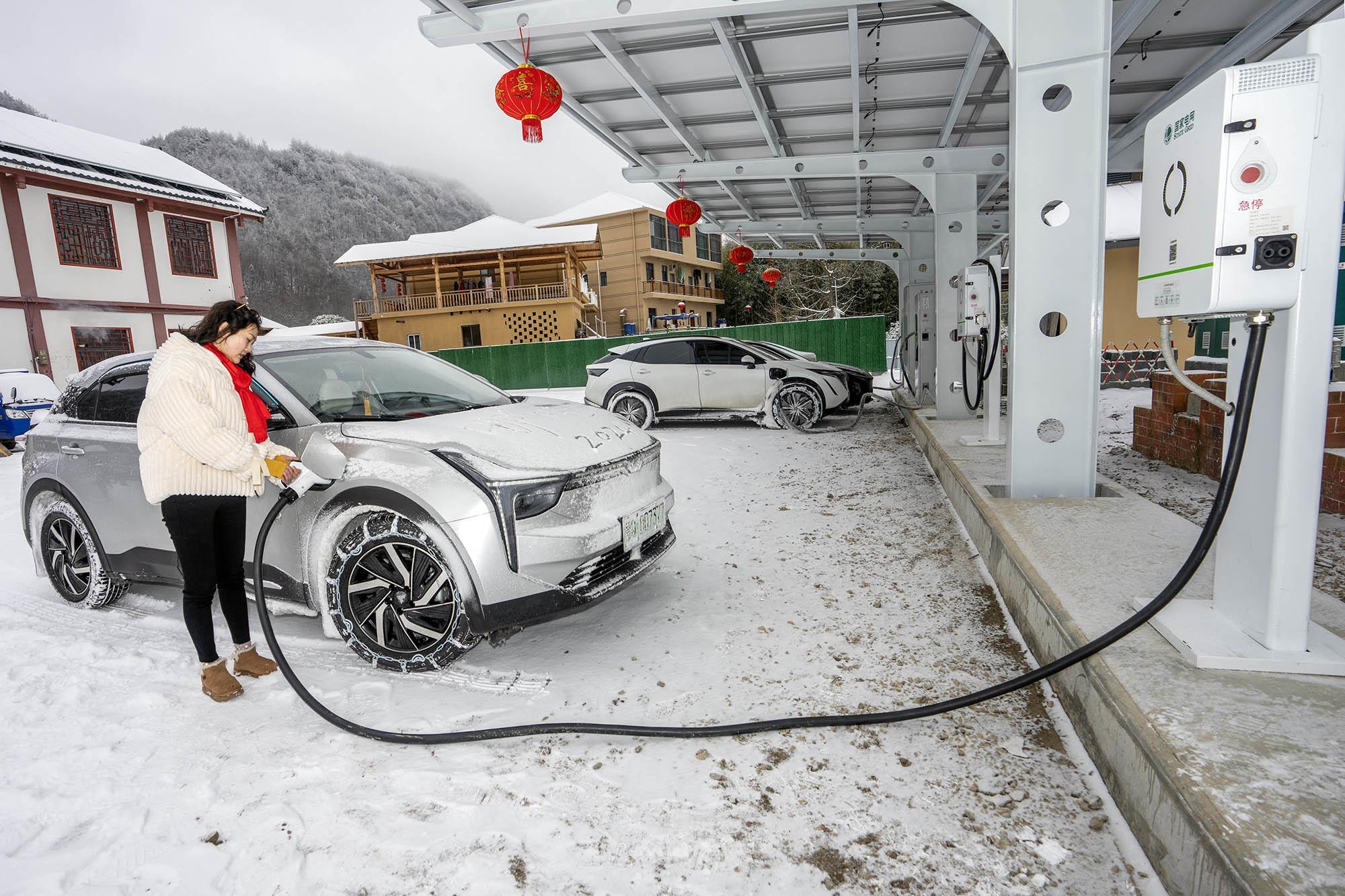 A villager uses newly established facilities to charge her electric car in Badong county, Hubei province, on Feb 2, 2024. (WEN LIN / FOR CHINA DAILY)
A villager uses newly established facilities to charge her electric car in Badong county, Hubei province, on Feb 2, 2024. (WEN LIN / FOR CHINA DAILY)
As the growth of the Chinese electric vehicle market increases demand for charging grids, the vehicle-to-grid (V2G) technology and infrastructure can offer a long-term solution, a political adviser and an industry expert said on Wednesday.
With the rapid adoption of new energy vehicles in China, simultaneous but uncoordinated charging of a large number of NEVs, especially during peak hours, can lead to a sudden spike in electricity demand, potentially challenging the steady operation of the power grid, said Zeng Yuqun, founder and CEO of Contemporary Amperex Technology Ltd, or CATL, the world's largest EV battery maker.
Vehicle-to-grid allows vehicle batteries to channel unused or available power back to the grid when demand is high to ensure grid stability.
Zeng Yuqun, founder and CEO of Contemporary Amperex Technology Ltd
As the proportion of new energy generation with fluctuating and intermittent characteristics continues to rise, the power grid faces a significant gap in flexible adjustment capacity to maintain real-time system balance, said Zeng, who is also a member of the 14th National Committee of the Chinese People's Political Consultative Conference, the country's top political advisory body.
READ MORE: Battery pioneer suggests EVs power the grid to go green
"V2G allows vehicle batteries to channel unused or available power back to the grid when demand is high to ensure grid stability. Not only will grid operators save significant costs in upgrading infrastructure to embrace the EV time, but EV drivers can also be paid with their vehicles," he said.
According to the China Association of Automobile Manufacturers, production and sales of NEVs in China last year exceeded 9.58 million and 9.49 million units, surging 35.8 percent and 37.9 percent year-on-year, respectively.
This can help improve charging infrastructure, with the number of NEV charging facilities up 65 percent year-on-year last year to almost 8.6 million by the end of 2023, according to data released by the National Energy Administration.
The NEA said it will continue expanding the country's network of charging facilities to meet the growing demand for electric cars. It has plans to promote the building of charging facilities in rural areas to tap the potential of NEV sales, it said.
EVs, together with solar batteries and lithium-ion batteries, are categorized as China's tech-intensive and green "new three", reporting a combined export value of 1.06 trillion yuan ($150 billion) last year, up 29.9 percent year-on-year, said the General Administration of Customs.
The rapid advancement of these sectors will not only drive growth but also foster development of new productive forces, injecting a renewed sense of confidence and dynamism into the world's second-largest economy, said Zeng.
Smart charging such as V2G will play a major role in meeting rising demand due to EV charging, particularly during peak hours, said Lin Boqiang, head of the China Institute for Studies in Energy Policy at Xiamen University.
Introducing V2G charging will not only ensure a stable grid network but also help save billions of yuan in investment for power capacity expansion. The advantages will be more obvious in the long term, he said.
According to Zeng of CATL, with the continuous improvement of EV battery technology and innovative business models such as battery swapping, China's electric heavy-duty trucks have gained significant market competitiveness in recent years.
ALSO READ: Experts call for creation of better smart electricity grid
However, their market penetration remains considerably lower than the average in the automotive industry, he said.
Zeng suggested further optimizing the management policies for electric heavy-duty trucks in China, refining standard systems and encouraging technological innovation and widespread adoption in the market, so that the transportation industry could reach dual carbon goals sooner than later.
In addition, as the management of industrial solid waste remains insufficient still, leading to negative impacts on the conservation, intensification, and recycling of industrial solid waste resources, Zeng suggested establishing a policy and standards for the management of industrial solid waste certificates.
By defining the responsibilities of various stakeholders, enhancing the requirements for comprehensive life-cycle management, and utilizing information technology to record and trace data throughout the entire process, it would be possible to come up with a comprehensive data recording for the entire life-cycle of industrial solid waste, ultimately promoting responsible and efficient management practices, he said.


